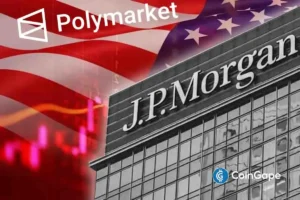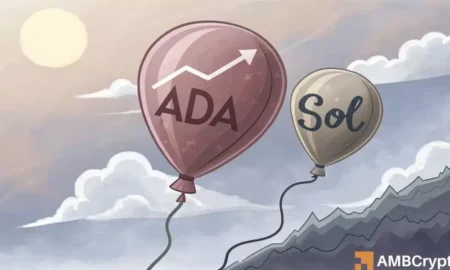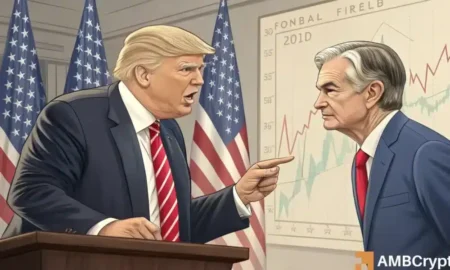Resilience of the Crypto Market: Implications of Trump’s Trade War and Regulatory Shifts
In recent weeks, the cryptocurrency market has demonstrated remarkable resilience, particularly in the wake of geopolitical developments such as Trump’s trade war. As investors anticipate long-term gains, Bitcoin (BTC) continues to be the focal point, holding strong amid growing pro-crypto sentiment emerging in Washington. Currently trading at $84,121, Bitcoin has recorded a slight increase of 0.65% from its previous close. Despite fears of a potential market-wide correction, this anticipated sell-off has not materialized, allowing the crypto market to maintain its positive momentum and further strengthen its upward trajectory.
The volatility in the crypto space comes on the heels of “Liberation Day” tariffs, which spurred notable market fluctuations. This upheaval has sparked a surge in market uncertainty, reflected by the spike in the Volatility Index (VIX) to an eight-month high. In contrast to the crypto market’s resilience, the major U.S. stock indices have faced significant sell-offs, erasing trillions in market capitalization. The Magnificent Seven stocks have fallen by 34% from their historical highs, showcasing the stark differences between crypto assets and traditional equities in times of economic stress. Additionally, the 10-year Treasury yield has retraced to pre-election levels, indicating a shifting economic landscape that has compelled investors to seek refuge in stable assets.
Market participants are increasingly anticipating a slowdown in U.S. aggregate demand due to the ongoing trade war’s effects. This, in turn, has led to a marked increase in the expectation of Federal Reserve rate cuts, with analysts now pricing in a 20% probability of three rate cuts by 2025, up from previous forecasts. If the labor market weakens and economic growth begins to falter, these anticipated rate cuts would make capital cheaper, fostering an environment where investors might favor digital assets like Bitcoin over traditional investments. This shift highlights the unique value proposition that cryptocurrencies offer amidst changing economic conditions.
In the face of these macroeconomic uncertainties, Bitcoin’s dominance in the crypto market has seen a positive uptick of 0.30%. This increase suggests that investors are viewing cryptocurrencies as an alternative store of value, signaling a flight towards digital assets as a hedge against traditional market volatility. Experts believe that the resilience shown by cryptocurrencies, especially Bitcoin, could set the stage for a significant shift in investment patterns, as more individuals and institutions consider diversifying into the crypto space.
Another factor contributing to the positive sentiment in the crypto market is the recent approval of Paul Atkins as the next SEC Chair by the U.S. Senate Banking Committee. Known for his pro-market stance, Atkins’ appointment is anticipated to lead to clearer, industry-friendly policies, moving the SEC away from stringent regulatory enforcement. This shift has bolstered investor confidence, making the crypto markets an attractive option for both long-term and opportunistic investors. With Bitcoin maintaining its position above $80,000 and major altcoins holding critical support levels, the environment appears ripe for potential institutional inflows.
If the prevailing conditions of a supportive regulatory climate and tactical monetary policies hold, there is a strong possibility that risk appetite among investors will further increase. Such an environment could lead to a market-wide rally as institutional players seek out opportunities within the crypto sector. As the Federal Reserve seems poised for quantitative easing, combined with impending regulatory shifts under Atkins’ leadership, the future for cryptocurrencies appears promising, potentially leading to greater market stability and growth in the coming quarters. The intersection of resilient market dynamics and changing regulatory attitudes sets the stage for the cryptocurrency market’s optimistic outlook in the face of broader economic challenges.
















